
Afonso I, also called Afonso Henriques, nicknamed the Conqueror and the Founder by the Portuguese, was the first king of Portugal. He achieved the independence of the County of Portugal, establishing a new kingdom and doubling its area with the Reconquista, an objective that he pursued until his death.
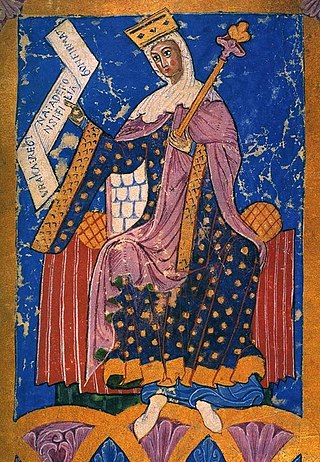
Urraca, called "the reckless" (la temeraria), was Queen of León, Castile and Galicia from 1109 until her death. She claimed the imperial title as suo jure Empress of All Spain and Empress of All Galicia.
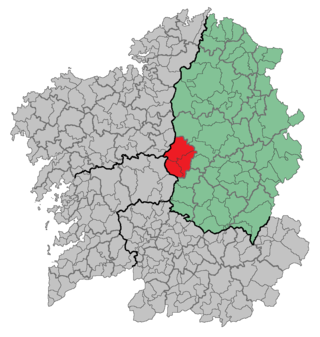
A Ulloa is a comarca in the province of Lugo, Galicia, in northwestern Spain.
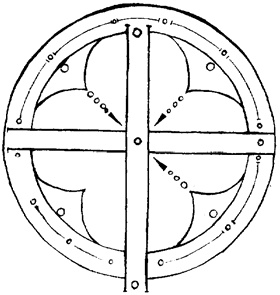
FernandoPérez de Traba, or Fernão Peres de Trava, was a nobleman and count of the Kingdom of León who for a time held power over all Galicia. He became the lover of Countess Teresa of Portugal, through whom he attained great influence in that domain, and was the de facto ruler of the County of Portugal between 1121 and 1128. The Poema de Almería, a Latin poem celebrating one of Alfonso VII's major victories of the Reconquista, records that "if one were to see him [Fernán], one would judge him already a king."
Traba or Trąba may refer to:
Fernando González de Traba or Fernão Gonçalves was a Galician magnate and the head of the House of Traba in the Kingdom of León during the reign of Ferdinand II. He was the eldest son of Gonzalo Fernández de Traba and Elvira Rodríguez. He was the alférez of the realm from April 1159 until at least 31 July 1160. He was recognised as a count, the highest noble rank in the kingdom, by 13 January 1160 in Galicia, but the royal chancery did not so style him until 13 February 1161. He held the tenencias which his father had held: Aranga (1160–61), Traba (1160–61), Monterroso (1160–63), and Trastámara (1161–65), even holding all four simultaneously. He supported with donations the Cistercian monasteries of Sobrado (1162) and Monfero (1163). Fernando signed his last known charter on 26 December 1165. There exists a charter mistakenly dated 6 January 1165 by which his brother, Gómez González de Traba, made a donation to Jubia for the sake of his soul. He had no known wife or children.

Arias Pérez or Peres was a Galician knight and military leader in the Kingdom of León. According to modern scholar Richard Fletcher, he was "active, resourceful, spirited and persuasive", and the contemporary Historia compostellana says that he was "so eloquent that he could turn black into white and white into black", although he "was not of the great nobility".

Gómez González de Traba was a Galician nobleman, a count from 1169, and a wealthy and influential figure in the Kingdom of León. He was the second son of Gonzalo Fernández de Traba and his first wife, Elvira Rodríguez. His elder brother, Fernando González, died prematurely in 1166 and Gómez became the head of the House of Traba.
Gonzalo Fernández de Traba was a Galician nobleman and the head of the Traba family. He was the eldest son and successor of Fernando Pérez de Traba by his wife Sancha González.

Gómez Núñez was a Galician and Portuguese political and military leader in the Kingdom of León. His power lay in the valley of the Minho, mainly on the north side, bounded by the Atlantic on the west and corresponding approximately with the Diocese of Tui. There, according to a contemporary source, he had "a strong site, a fence of castles and a multitude of knights and infantry."

Gutierre Vermúdez was a nobleman of the Kingdom of León, with interests primarily in Galicia, mainly in the northeast, around Lugo. He was a strong and loyal supporter of both Queen Urraca (1109–26) and the Emperor Alfonso VII (1126–57).
Munio or Muño Peláez was a Galician magnate, a member of the Banu Gómez clan, during the reigns of Alfonso VI, Urraca and Alfonso VII. By December 1108 he held the title of comes (count), the highest in the kingdom. He was a son of count Pelayo Gómez, grandson son of Gómez Díaz de Carrión and Teresa Peláez. His mother was Elvira Muñoz, half-sister of count Rodrigo Muñoz, and daughter of Munio Rodríguez and Ilduara Velázquez. Elvira's ancestors had founded the monastery of Santa María de Ferreira.

Pedro Fróilaz de Traba was the most powerful secular magnate in the Kingdom of Galicia during the first quarter of the twelfth century. According to the Historia compostelana, he was "spirited ... warlike ... of great power ... a man who feared God and hated iniquity," for Diego Gelmírez himself had "fed him, like a spiritual son, with the nutriment of holy teaching." Brought up at the court of the Emperor Alfonso VI, Pedro raised the future Emperor Alfonso VII in his household. Around the latter he and Diego formed a "Galician party" that dominated that region during the turbulent reign of Urraca (1109–26). In September 1111 they even had the child Alfonso crowned king at Santiago de Compostela, but it was Pedro who was imperator in orbe Galletiae.
Froila Vermúdez was a Galician nobleman born in the 11th century. He is the first known member of the House of Traba. This family was originally from the Costa da Morte. He was an important count in the north and north-west of Galicia. He died in Cospeito in 1091, and was buried in the monastery of Xuvia, with which he had maintained a close relationship. He left three daughters and three sons, of whom Pedro Fróilaz was his political heir. The family properties covered much of the territory north of river Tambre.

Rodrigo Vélaz was the "count of Galicia, who held Sarria" according to the near-contemporary Chronica Adefonsi imperatoris. During his long public career he was the dominant figure in mountainous eastern Galicia while the House of Traba dominated its western seaboard. He served under three monarchs—Alfonso VI, Urraca, and Alfonso VII—and was loyal to all of them, never figuring in any rebellion. The contemporary Historia compostellana is a valuable source for his life, since there are no aristocratic archives surviving in Spain from this period. Rodrigo's career must be pieced together from the few references in the chronicles and the charters preserved in various ecclesiastical archives.

Rodrigo Pérez de Traba, called el Velloso, was a Galician magnate who rose to prominence after the coronation of Alfonso VII as co-ruler of León in 1111. He served Alfonso at court in his early years, but was given increased responsibility in Galicia after the death of Alfonso's mother, Queen Urraca (1126). After about 1132 he became increasingly involved in the politics of Portugal, whose invasion of Galicia he supported in 1137. Even after León and Portugal made peace in 1141 Rodrigo was largely excluded from Leonese politics, with the notable exception of the military campaigns of 1147, until 1152. Thereafter until his death he was the dominant lay figure in Galicia.
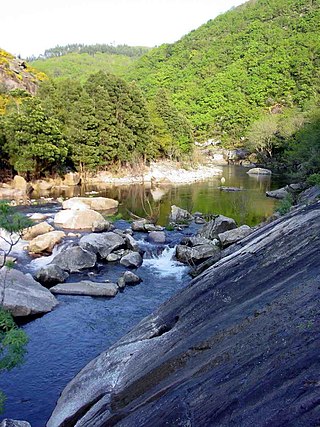
The County of Trastámara was a tenancy of the crown in the Kingdom of Galicia in the Middle Ages. Its name comes from the Latin tra(n)s Tamar(is), meaning "beyond [north of] the Tambre", a river which runs through Galicia. It was regularly granted to men of a single family, the House of Traba from the 11th century into the 13th, after which it was often given for life to others, including Alvar Núñez Osorio and the future King Henry II of Castile, whose dynasty is thus known as the House of Trastámara. On 4 February 1445 in San Martín de Valdeiglesias, it was granted as a hereditary possession to Pedro Álvarez Osorio by Juan II of Castile.
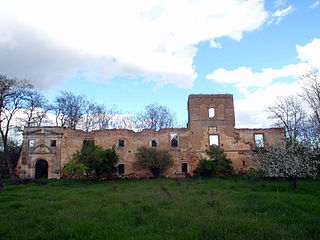
Sancha Ponce de Cabrera was a daughter of Ponce Giraldo de Cabrera, and his first wife, Sancha Núñez. She was the wife of the important magnate from the Kingdom of León, Vela Gutiérrez.
The Banu Gómez were a powerful but fractious noble family living on the Castilian marches of the Kingdom of León from the 10th to the 12th centuries. They rose to prominence in the 10th century as counts in Saldaña, Carrión and Liébana, and reached their apogee when, allied with Córdoba warlord, Almanzor, their head, García Gómez, expelled king Vermudo II of León and briefly ruled there. He would reconcile with the royal family, but launched two subsequent rebellions. On his death, the senior line of the family was eclipsed, but a younger branch would return to prominence, producing Pedro Ansúrez, one of the premier noblemen under king Alfonso VI and queen Urraca in the late 11th and early 12th centuries. The family would be portrayed in the Cantar de Mio Cid as rivals and antagonists of the hero, El Cid, and their rebellions would serve as a basis for the legend of Bernardo del Carpio.
Rodrigo Gómez de Traba, also called Ruy Gómez de Trastámara, was a Galician nobleman of the House of Traba.
















